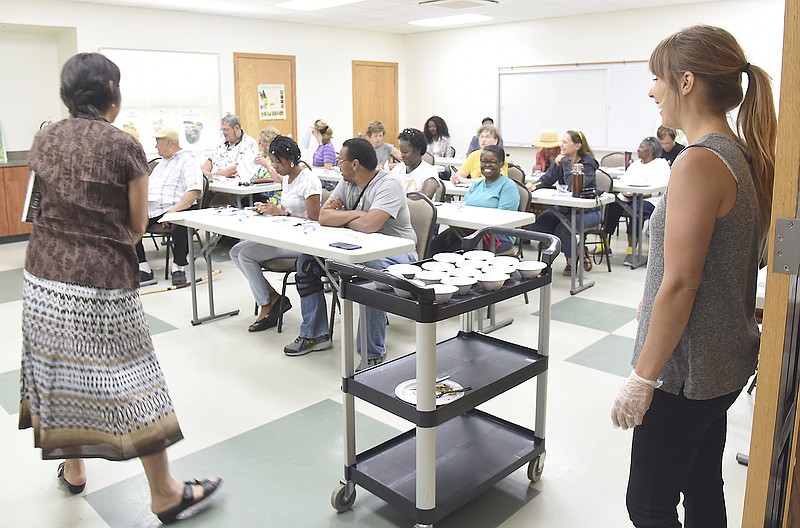A group of 20 people gathered Thursday at Lincoln University's Lorenzo Greene Hall to learn how gooseberries - a tart, succulent fruit - can be used in different recipes.
The Dining Wild class was led by Nadia Navarrete-Tindall, director of the Native Plants Program at LU, and Taylor Cleveland, chef and owner of Taylor Made Prepared Foods.
Three recipes were featured at the tasting: roasted chicken with gooseberry gravy, flat bread chutney with gooseberries and gooseberry custard. Each recipe was prepared by Cleveland with some assistance from Navarrete-Tindall.
"It's like an explosion of flavor in your mouth," said Robert Goser, who was attending a Dining Wild tasting for the first time.
Darrell Shipley, a Lincoln University alumnus and former plant caretaker in the Native Plants Program, said he enjoyed the unique flavor gooseberries gave each dish.
"When I first tasted this (the flat bread), I was like, 'Eh,'" he said. "But the more I ate it, the more flavor I got."
Navarrete-Tindall explained anyone who tastes a gooseberry can expect a bit of tartness because that's what adds to its flavor. Gooseberries found in a garden are best when they are green. They start to get soft and lose flavor once they turn a pinkish color, she said.
"Gooseberries are one of the native plants that are the most widely sold commercially because they are the easiest native plants to grow," Navarrete-Tindall said. "But like any plant grown in monoculture, it may have some problems."
She explained learning to prune the plant will help prevent problems with insects. Once they ripen, the berries are loaded with vitamin C.
In general, native plants are rich in nutrients for the body, and many of the participants shared personal stories of how they have benefited from using native plants in their home recipes.
Ann Holman said a good remedy for high blood pressure comes from the greens of the dandelion plant.
"As a child, my family cooked the greens from the dandelion plant as an intestinal clearing, and it will bring down high blood pressure," she said. "We didn't have blood pressure pills, and every spring we ate them."
Holman explained it comes from an old Cherokee Indian remedy and has helped her cut down on the amount of medication she has to take.
Hugh Flowers said adding purslane to a salad is a delicious and nutritious treat.
"It adds a delicious flavor to a salad and is a native plant with the highest source of Omega 3," Flowers said.
Purslane, a native plant found across Mid-Missouri, doesn't need to be watered often, is easily found and can be eaten raw or slightly cooked, Navarrete-Tindall said.
She also suggested trying native plants such as cup plants, greens, narrows and the green leaves of poke plants.

